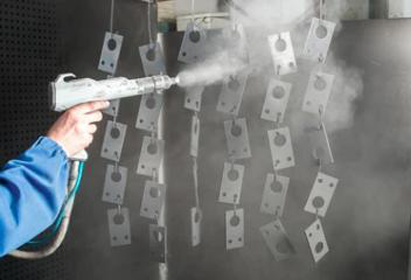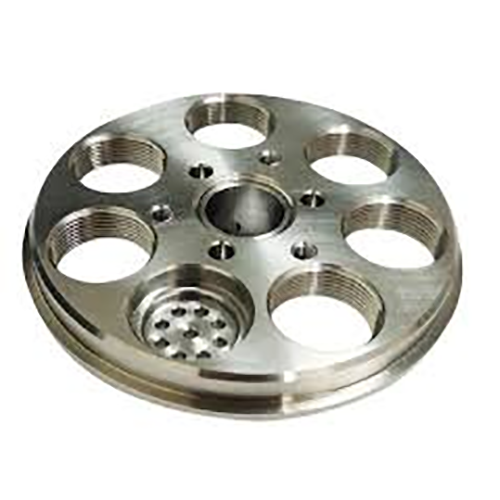
Securing exact surface quality on a machined component is highly significant.
- Design documents set out definitive finishing requirements for parts
- Surface notes typically employ Ra—arithmetic mean deviation—when specifying roughness
- Knowing how to read finish callouts is critical for meeting performance goals
- Defined surface quality influences lubricant retention, coefficient of friction, and wear resistance
- It is essential to interpret the specific callout to achieve the desired outcome
CNC Machining: Precision Engineering Defined

Automated machining signifies a significant manufacturing innovation by leveraging computer-aided programs machines execute intricate designs with remarkable accuracy.
- The technology facilitates production of complex parts across many materials
- CNC adaptability suits industries including aerospace and automotive sectors
- G-code driven machining maintains reliable consistency across batches
Across R&D to production scale-up CNC machining drives manufacturing evolution
Interpreting CNC Specifications
Reading machine specs may appear overwhelming initially
That said, foundational understanding plus a method lets you confront technical details
Commence with recognizing main metrics: spindle rpm, feed, precision, work volume, control system
Every spec plays a role in determining machine performance.
Example: increased spindle revolutions aid soft materials; accelerated feed raises production.
Recognizing these ties supports choosing machines suited to target production
Always examine producer technical literature in detail.
Maker resources usually present informative direction and demystify jargon
Comprehensive Guide to CNC Machinery
G-code driven machining centers are computer-run systems for precise automated production of varied materials These systems execute G-code sequences to govern tool movement and actuation.
- Frequent CNC varieties include mills, lathes, routers, plasma cutting machines
- Cutting methods suit steels, plastics, woods, and layered composites
- In addition these machines facilitate quick prototyping and short-run manufacturing for startups and labs
CNC Basics and Explanations
They illustrate synthesis of mechanical precision and computerized control logic Versatile machinery employs programmed code to autonomously produce simple parts and complex assemblies The fundamental principle behind CNC machines is the translation of digital designs into physical forms.
- Numerical control manufacturing
- CAD-to-CAM integration
It includes exact tool motions driven by CNC instructions Operators play a crucial role in selecting the appropriate cutting parameters monitoring the operation and ensuring the quality of the final product.
Significance of Surface Finish in CNC
Obtaining required finish during machining is essential It greatly affects the final product's performance as well as its aesthetics The type of material being machined the cutting parameters used and the post-processing operations all contribute to the achieved surface texture.
High-quality surfaces strengthen durability while rough textures may reduce efficacy Numerical control machining supplies multiple methods and cutters to obtain target textures.
- Including selection of alternative tool profiles |diamond tooling|spindle rpm choices to produce target surface
- Supplementary finishing like polishing or abrasive grinding enhances surface
Comprehending the connections between machining choices and texture secures better results.
An Introduction to CNC Machine Operation
CNC machining is a precise method of manufacturing that employs computer-controlled machinery to shape parts from various materials They execute coded toolpaths to create intricate parts repeatedly A fundamental understanding of CNC machine operation including the role of G-code programming and tool selection is essential for successful machining processes
CNC applications stretch across aerospace, automotive, medical device, and electronics industries From intricate propeller parts to exacting mold inserts, CNC produces accurate geometries
Callouts and Surface Roughness for CNC Parts
Exact finish callout is important for CNC component manufacturing It makes sure the product satisfies function and aesthetic demands Drawings usually depict finish requirements with Ra roughness values The value, shown in µm or inches, quantifies mean surface irregularity height.
Balance smoothness needs with intended application when designating finish

In many cases fine finishes are necessary for accurate alignment and tight interfaces
More pronounced surface profiles help applications relying on friction or traction
Utilize a clear and concise callout in your engineering drawings to communicate the desired surface finish Document the Ra value and enumerate any extra finishing or treatment instructions.
Observe that unambiguous finish specifications are vital for manufacturing outcomes
Varieties of CNC Machines and Capabilities
There exists a diverse field of CNC machines built to serve many operational purposes They work with CAD/CAM programs to command cutters and deliver accurate component fabrication.
- Milling machines are renowned for their ability to remove material from a workpiece shaping it into complex geometries
- Routers carve wood composite and plastics into detailed shapes and profiles
- Waterjet cutters use high-pressure abrasive streams to cut diverse materials without thermal effects
The choice of CNC machine depends on the specific project requirements materials being worked with and desired precision Different CNC platforms supply distinct functionality valuable across industries including automotive and aviation.
Achieving Optimal Surface Finish with CNC Machining
Delivering optimal surface quality is necessary and CNC processes are well-suited to achieve it Through careful tuning of feeds speeds and tool profiles operators manage chip formation and surface generation Plus durable cutting materials and appropriate coolant control boost finish quality Deliberate machining strategies and exact setups enable production of components with excellent texture.
CNC Programming to Achieve Surface Quality
Managing finish via CNC code is important to secure required surface properties Feed selection spindle rpm and cutter geometry collectively determine texture outcomes Thoughtful parameter choices coupled with correct lubrication help produce polished surfaces.
- Furthermore regular tool maintenance and inspection are essential for ensuring a consistent and high-quality surface finish over time In addition periodic tool what is a cnc machine servicing and checks secure consistent surface quality Plus regular inspection and maintenance of tools copyright finishing standards
- To perfect surface results factor in material, roughness, and intended application
- Employing simulation software can help visualize and fine-tune cutting parameters before machining reducing the risk of surface defects
- Furthermore regular tool maintenance and inspection are essential for ensuring a consistent and high-quality surface finish over time
